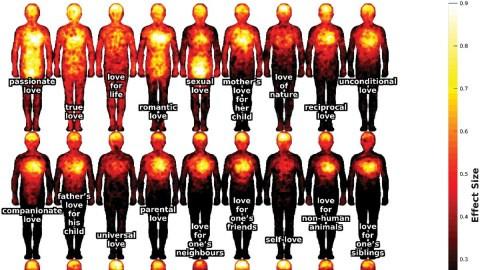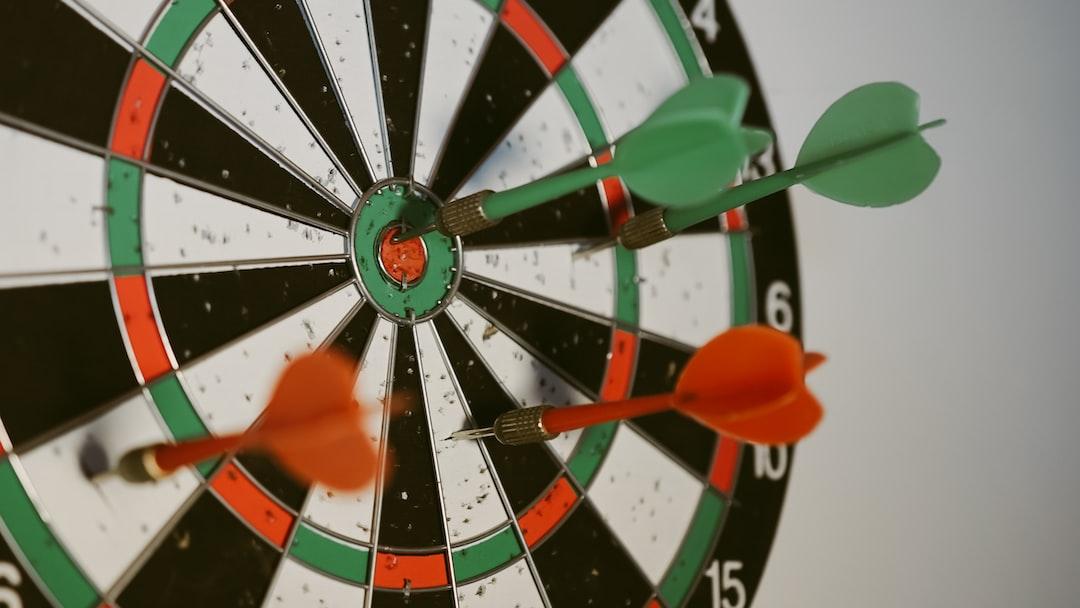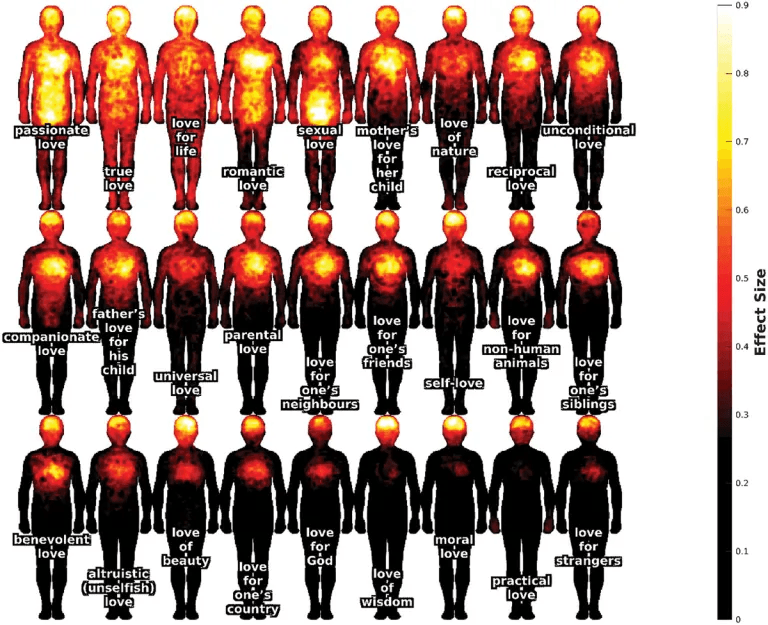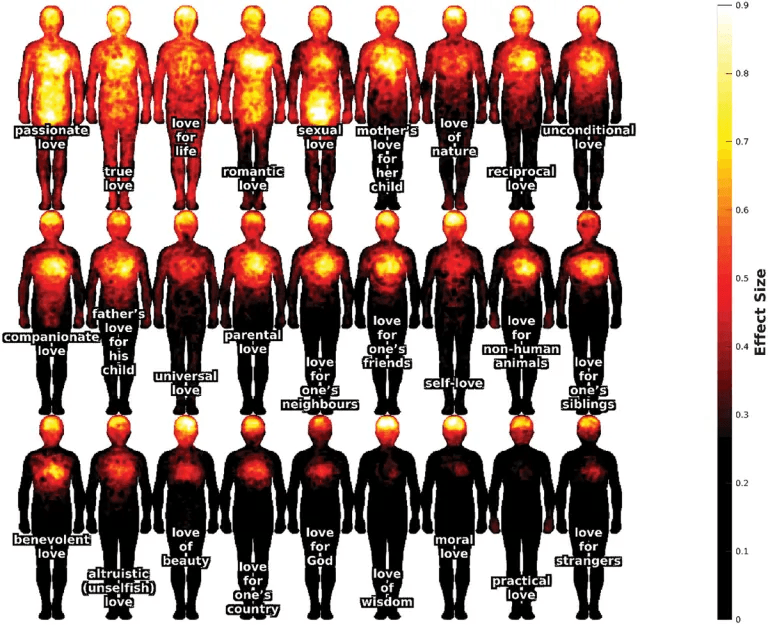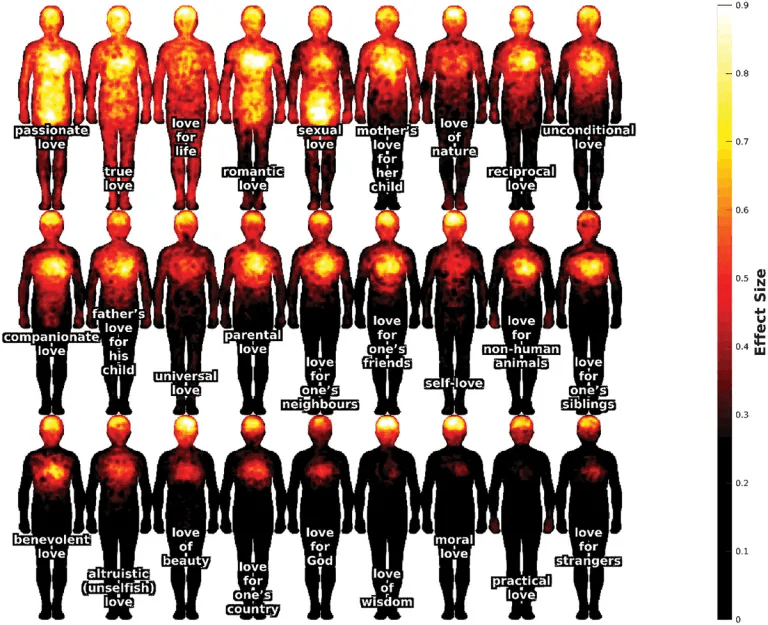Mapping love: How 27 different types of love manifest in the body
Curated from: bigthink.com
Ideas, facts & insights covering these topics:
7 ideas
·2.94K reads
26
2
Explore the World's Best Ideas
Join today and uncover 100+ curated journeys from 50+ topics. Unlock access to our mobile app with extensive features.
Mapping love across the body
A study from Aalto University in Finland explored 27 different types of love and how they manifest in the body:
- 558 Finnish speakers answered questions about how they felt and how frequently they experienced these 27 types of love in their bodies.
- The study highlights the diversity and complexity of love, showing that even within this one emotion, we experience variations in location, intensity, and controllability. It also acknowledges the inherent difficulty of defining and categorizing love due to its subjective nature. Ultimately, the research challenges a rigid view of love.
28
513 reads
Researchers identified 27 types of love
Researchers identified 27 types of love, encompassing feelings for humans (romantic, parent-child, etc.), non-human beings (animals, nature), and abstract concepts (wisdom, country). Their approach draws on the "prototype theory of love," which suggests certain types are closer to the core concept of love (e.g., romantic love).
29
454 reads
Their aim wasn't to create a definitive list of all possible loves, but to investigate several key questions:
- Location: Where in the body are different types of love felt?
- Nature: How does each type relate to emotional valence, physical/mental experience, and controllability
- Similarity: How closely related are different types of love in terms of bodily and mental experiences?
27
412 reads
Location
All love types were felt in the head, though intensity varied. Stronger affections like true love and passionate love activated the chest more, while weaker ones like love of wisdom were mainly head-centered.
29
450 reads
Interpersonal love types were stronger than those for non-human beings or ideas. Within categories, true love, passionate love, love for life, and love for nature were strongest, while love for strangers and practical love were weakest. Interestingly, love for life and nature ranked as high as family/friend love and higher than self-love.
30
378 reads
Touch and Control
Self-love was the most controllable but least frequently experienced. In terms of "touch," self-love was stronger than love for life and nature, possibly hinting at its social nature.
24
380 reads
Mind-Body Link
A strong correlation emerged between bodily and mental salience and valence - the more prominent a love in the body, the stronger it is felt in the mind and the more pleasurable it is. This link between body and mind suggests that love isn't just something in your head – it's a whole-body experience, and the stronger it feels physically, the deeper and more joyful it feels emotionally.
32
354 reads
IDEAS CURATED BY
CURATOR'S NOTE
This research challenges the focus on romantic/parental love in psychology and neuroscience, contributing to a broader understanding of love's diverse landscape. Rinne hopes this encourages both theoretical development and public discussions about love in all its forms.
“
Similar ideas
4 ideas
Types of Hormones in the Body and How They Work
thoughtco.com
3 ideas
Your body is a map of your emotions
fastcompany.com
9 ideas
Love is All Around Us
odacite.com
Read & Learn
20x Faster
without
deepstash
with
deepstash
with
deepstash
Personalized microlearning
—
100+ Learning Journeys
—
Access to 200,000+ ideas
—
Access to the mobile app
—
Unlimited idea saving
—
—
Unlimited history
—
—
Unlimited listening to ideas
—
—
Downloading & offline access
—
—
Supercharge your mind with one idea per day
Enter your email and spend 1 minute every day to learn something new.
I agree to receive email updates
